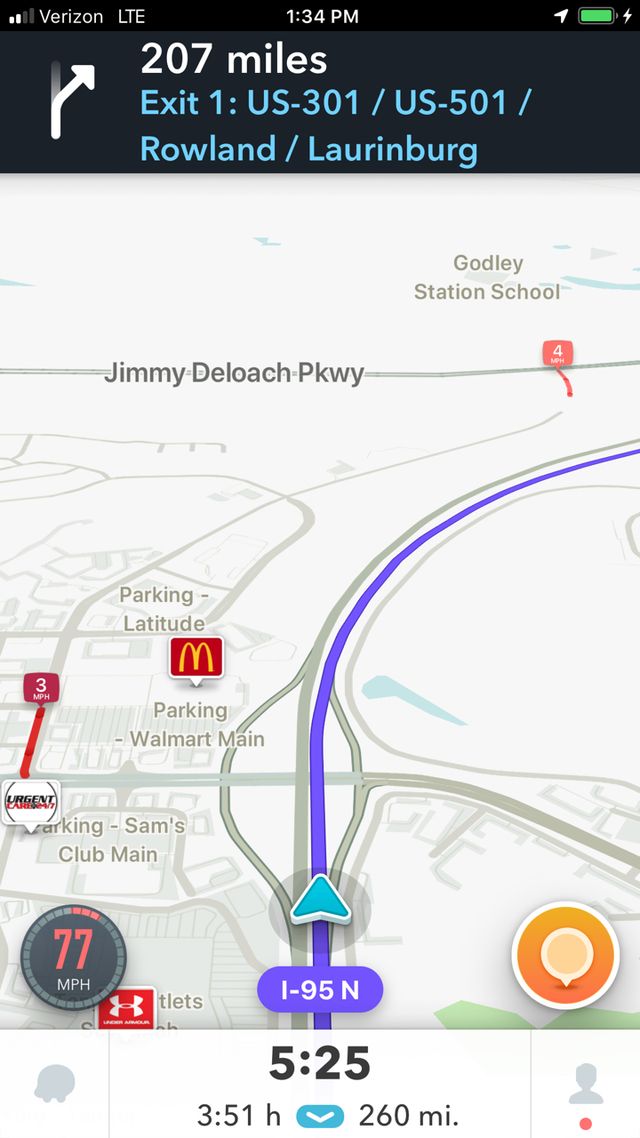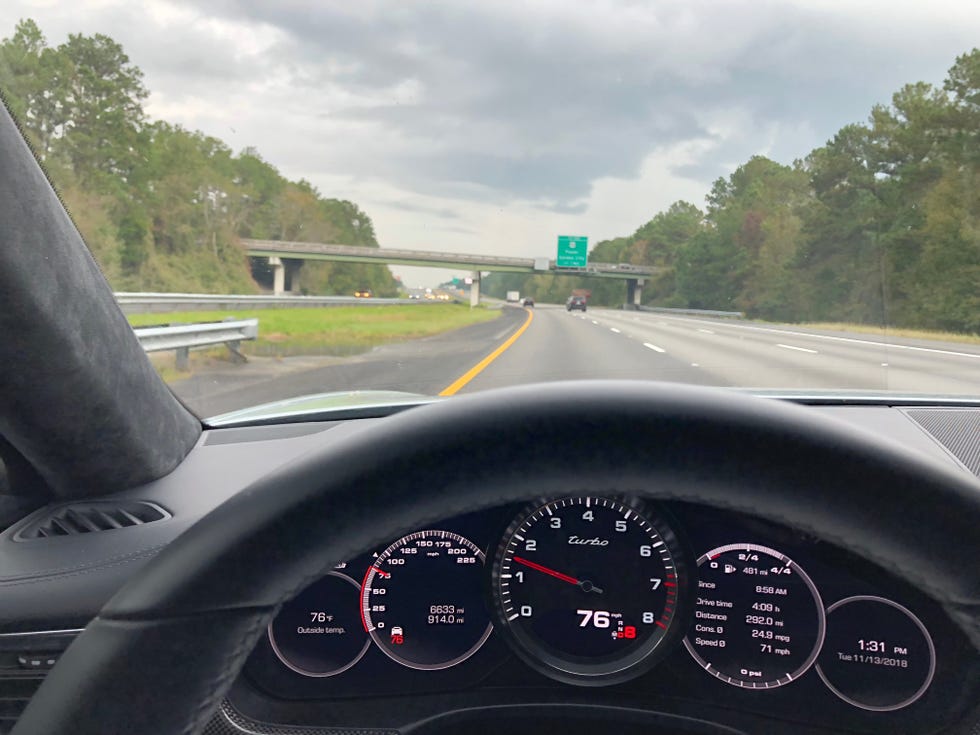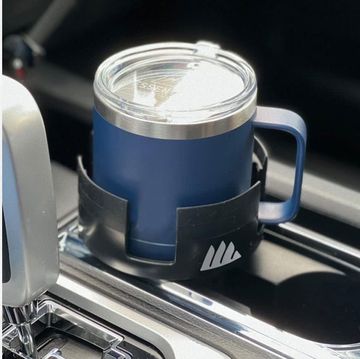Here's a question that's been bothering me for a while. How much driving would you save on a given highway trip if you took the inside lane on every corner?
Simple math tells us that a car travels a shorter distance to round the inside of a curve than the outside. Could that fact make a marked difference in mileage on a road trip? Not if you're driving cross-country on a mostly straight road like I-80. But consider a curvy path like I-95, which wends and winds its way along the Eastern seaboard. That's where I decided to run an experiment during a recent drive.
For more than 200 miles, I hugged the inside lane, even if it meant slowing down and camping behind a semitruck for a mile. Note that I did this on a day with light traffic, when it was no problem to slide between lanes. Even so, I might've missed a portion of a corner here and there, but for the most part I stuck to the inside lane with maniacal devotion.
To figure out whether that was worth it, I compared my Waze GPS distance to actual distance recorded by the odometer. So the moment Waze clicked over onto a new mileage to the next exit, I noted both the Waze distance and the car's odometer. Then, when I stopped the experiment 211 Waze miles later, I logged the odometer reading again. Would they agree, or did I shave any useful amount of distance?
Consider the math for a minute. Let's say you're driving in a circle with a mile-long circumference, so driving around half of it covers 2,640 feet. Call that the inside lane. On a three-lane highway with 12-foot lanes, moving into the outside lane would increase the circle's radius by 24 feet, from about 840 feet to 864. The net effect after a half-mile is that you've driven an extra 75 feet or so by moving into the outer lane. Which isn't a big deal. But that's a rate of 150 feet per mile. After 200 miles, staying in the inside line would cut 5.7 miles from your trip.
Now, highways have straightaways, and not even the most sinuous snaking road has constant curves. So I didn't expect to lop 5.7 miles off my trip. But some kind of miles, maybe?
First, I had to make sure I had a good way to track the math, and about 50 miles into the experiment. I came to a distressing realization: The car's speedometer was off, and thus, so was the odometer.
The car in question—a Porsche Panamera Turbo Sport Turismo—apparently tries to protect its driver from the law by slightly exaggerating its velocity. The error gets larger as speeds increase. By driving different speeds and comparing to the GPS speed, I calculated that the Panamera odometer required a correction factor of .973. As in, if the Panamera told you that you covered 1,000 miles, you actually did 973. Or, from a practical license-retention standpoint, if the Panamera says you're doing 76 mph, you're actually only going 74 mph. Hey, that might make a difference between getting pulled over or not. And since Germans don't do anything by accident, I assume that's the logic behind the built-in fudge factor.
Anyway: After 211 Waze map miles, the car tells me that I've covered... 212 miles. Which, of course, makes no sense. But after applying the speedometer fudge factor correction, that 212 miles becomes 206.4—a full 4.6 miles less than the mapped GPS value. Even if my odometer correction value was a little generous, we can still say that the inside lane cut distance by about two percent on this stretch of highway.
To which you might say, "Who cares?" Oh, I don't know. How about somebody who's running out of gas? Or somebody in an EV trying to get to the next charging station? Or even a fleet company racking major miles. If you're driving overnight and there's no traffic, an inside-lane-when-possible policy could save a worthwhile amount of fuel. Two percent is an efficiency worth grabbing.
Of course, this was an informal and imperfect experiment. But it makes sense: the inside lane is always shorter—although, as I also found, it's definitely not always faster.
Ezra Dyer is a Car and Driver senior editor and columnist. He's now based in North Carolina but still remembers how to turn right. He owns a 2009 GEM e4 and once drove 206 mph. Those facts are mutually exclusive.














